- +44 (0)7986 644 851
- info@woodandmetalcrafts.com

The Starbond Difference
Starbond has been supplying industrial grade cyanoacrylate adhesives (CA glue) for industries such as woodworking and turning, dental lab, palaeontology, lapidary, screen printing, 3D rapid prototyping and many more.
The Starbond formula produces more durable, stronger, and less brittle superglues. Monthly production means that you receive the absolute freshest glues — this ensures that the glues have not just been sitting around for several months.
Their values in innovation drive them to learn about the most important user-application needs in developing more useful and attractive products and design.
For over 30 years, Starbond has “stuck” to its mission of supplying unrivalled adhesive quality and customer-centric solutions.
-
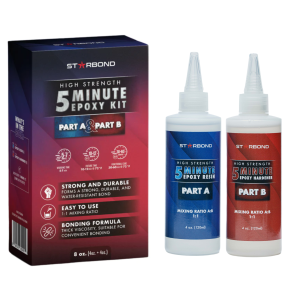
Starbond 5 Minute Epoxy Resin kit 8oz/225g
£10.50 excl. vat Read more -
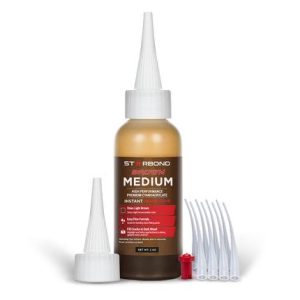
Starbond Brown Medium CA glue 2oz
£8.00 excl. vat Read more -
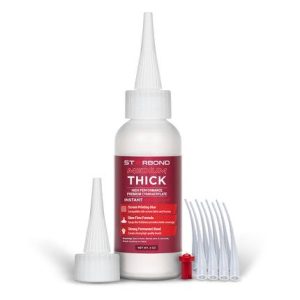
Starbond Medium-Thick clear CA glue 2oz
£8.75 excl. vat Read more -
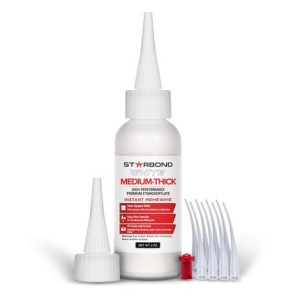
Starbond White Medium-Thick CA glue 2oz
£9.99 excl. vat Read more -
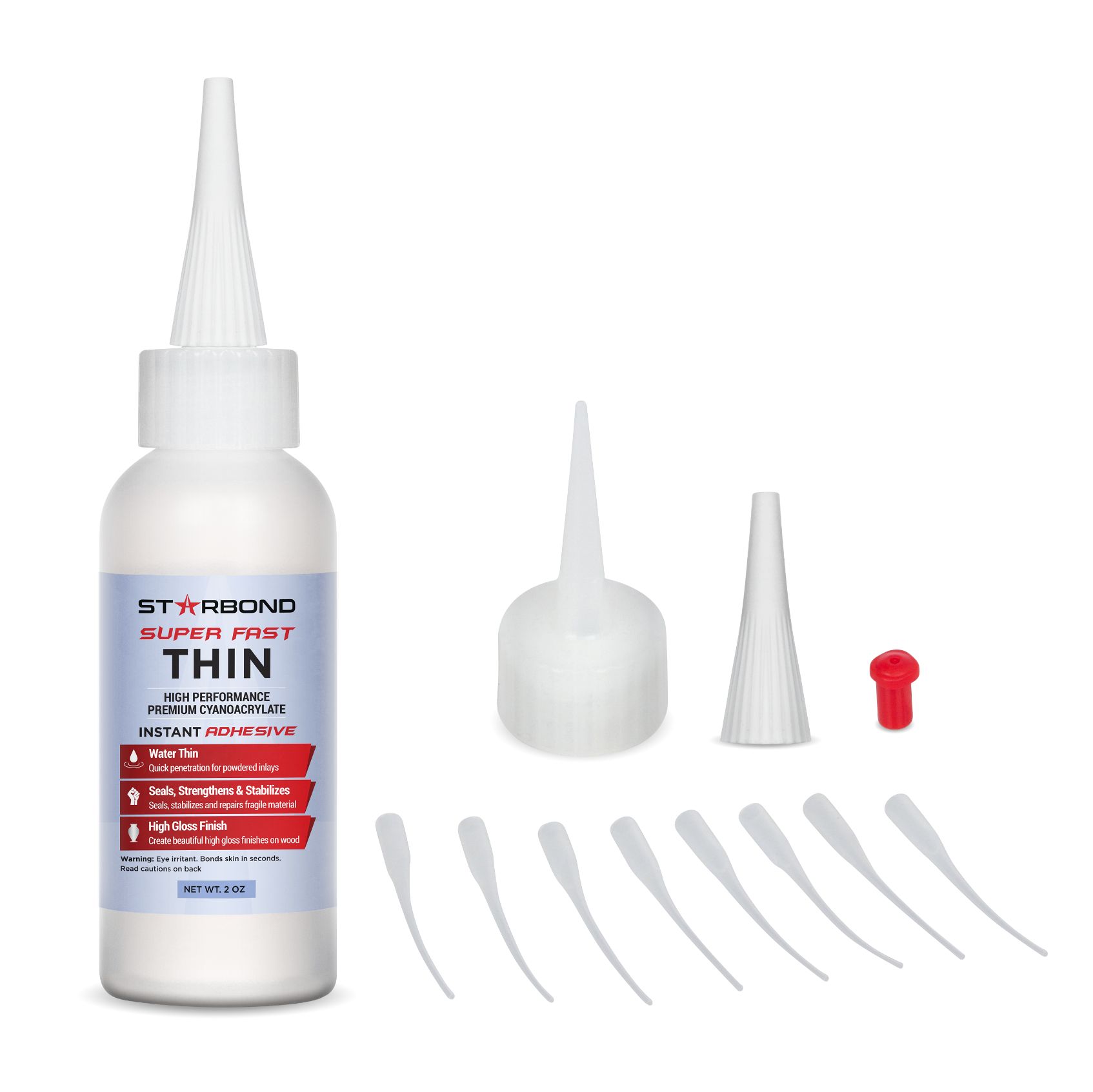
Starbond Super Fast Thin clear CA glue 2oz.
£7.95 excl. vat Read more -
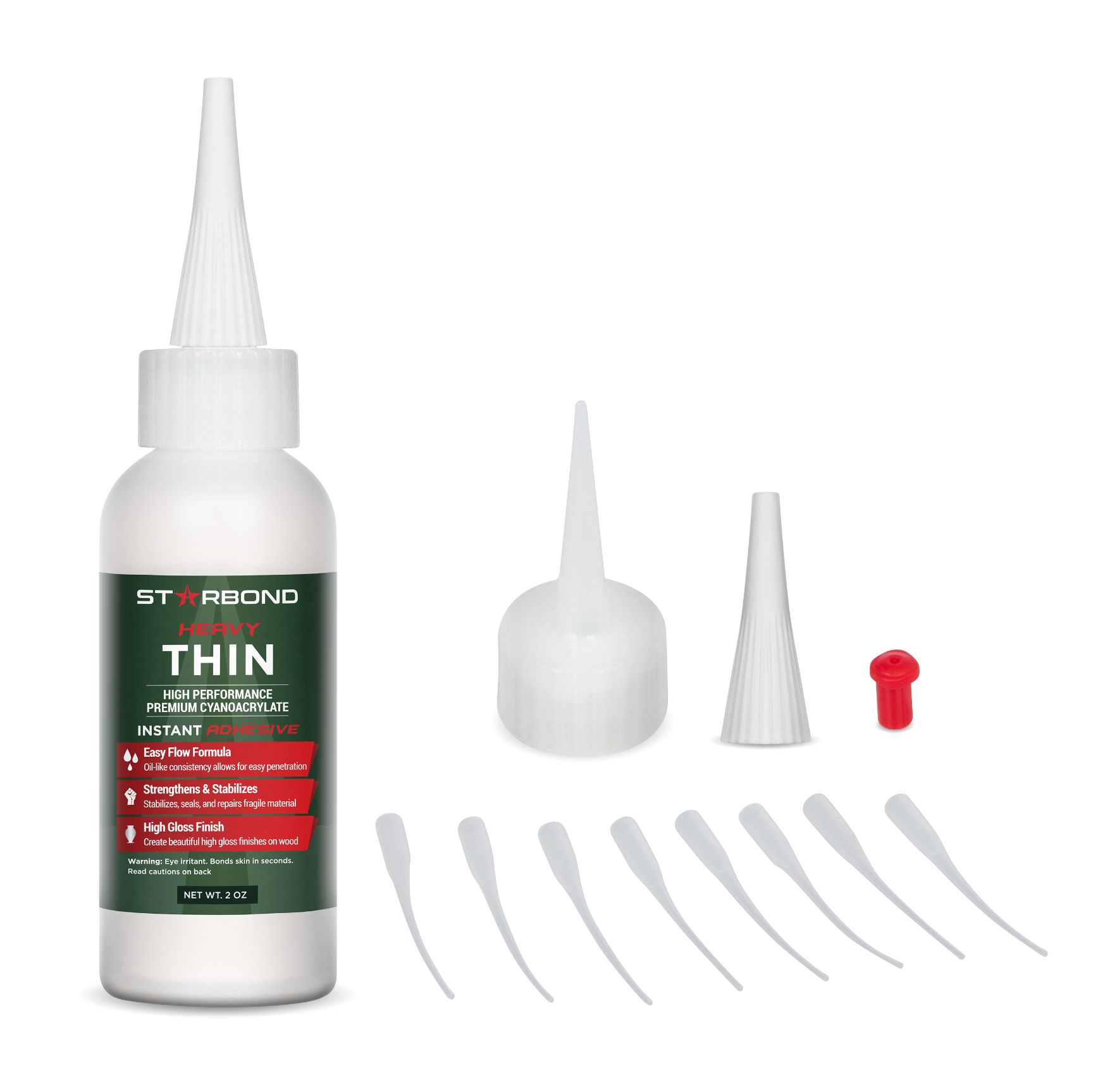
Starbond Heavy Thin (medium) clear CA glue 2oz.
£8.75 excl. vat Add to basket -
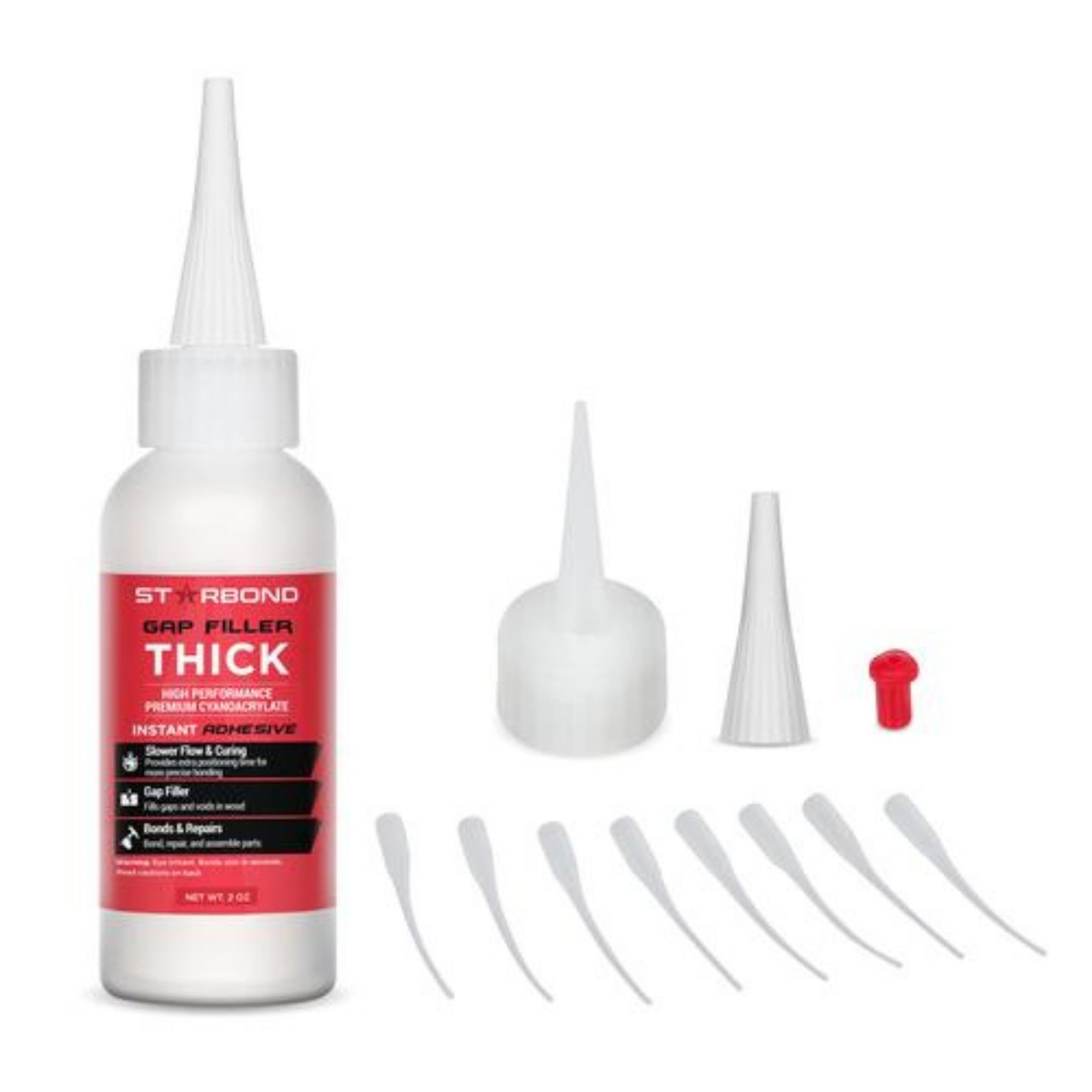
Starbond Gap Filler Thick clear CA glue 2oz.
£8.75 excl. vat Read more -
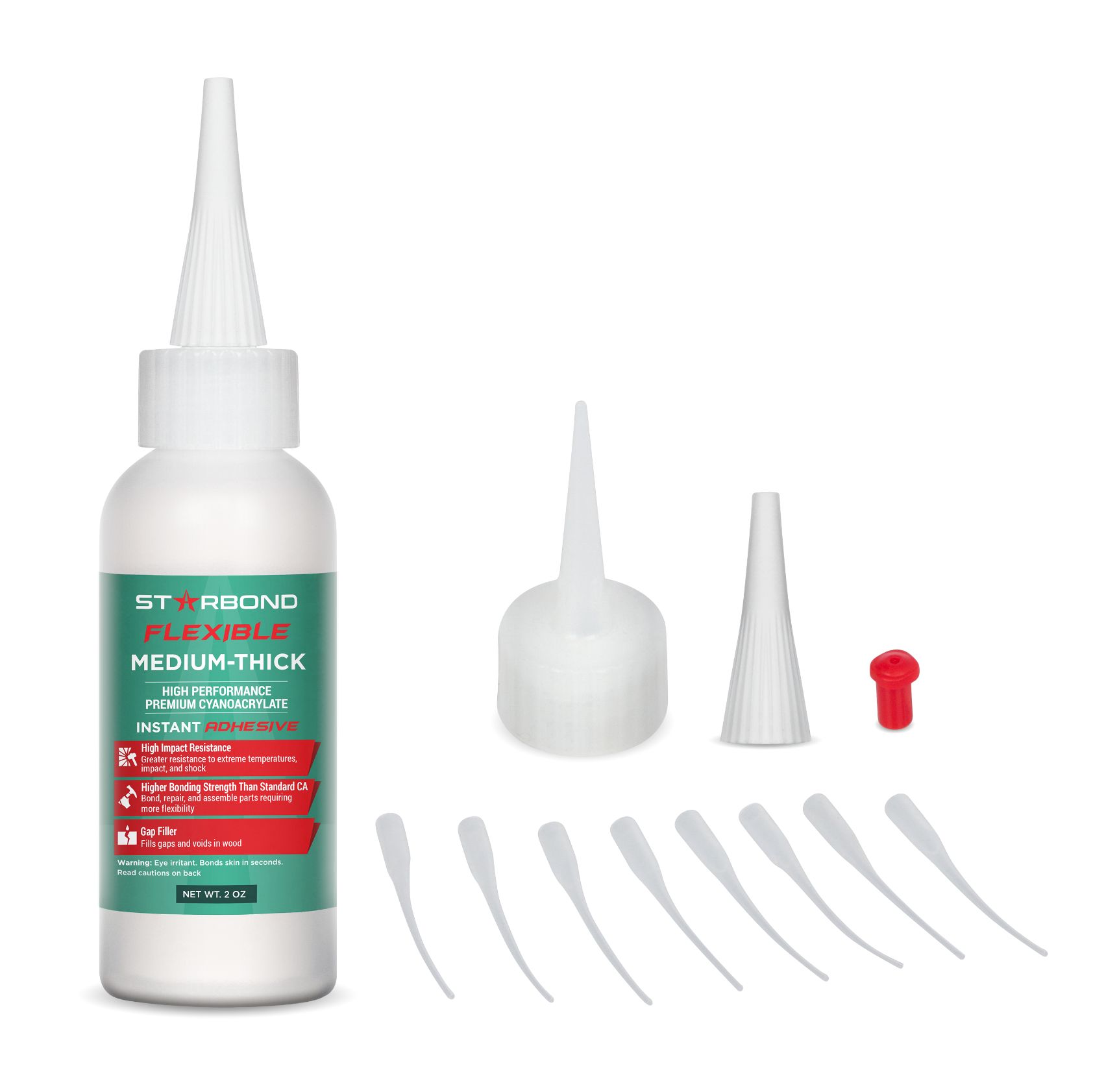
Starbond Flexible Heavy Medium (medium thick) CA glue 2oz.
£8.75 excl. vat Read more -
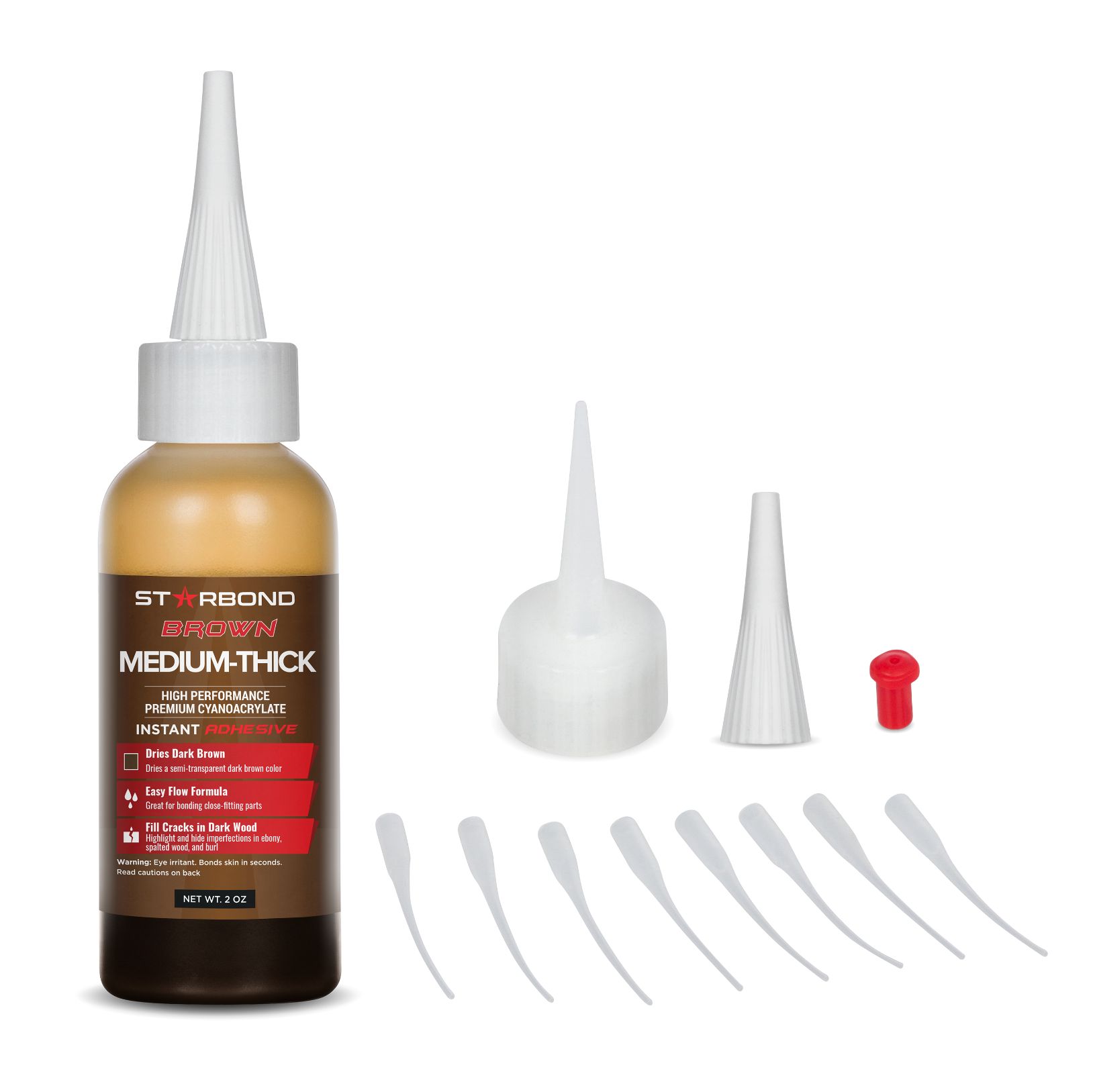
Starbond “Dark” Brown Medium-Thick CA glue 2oz.
£8.00 excl. vat Read more -
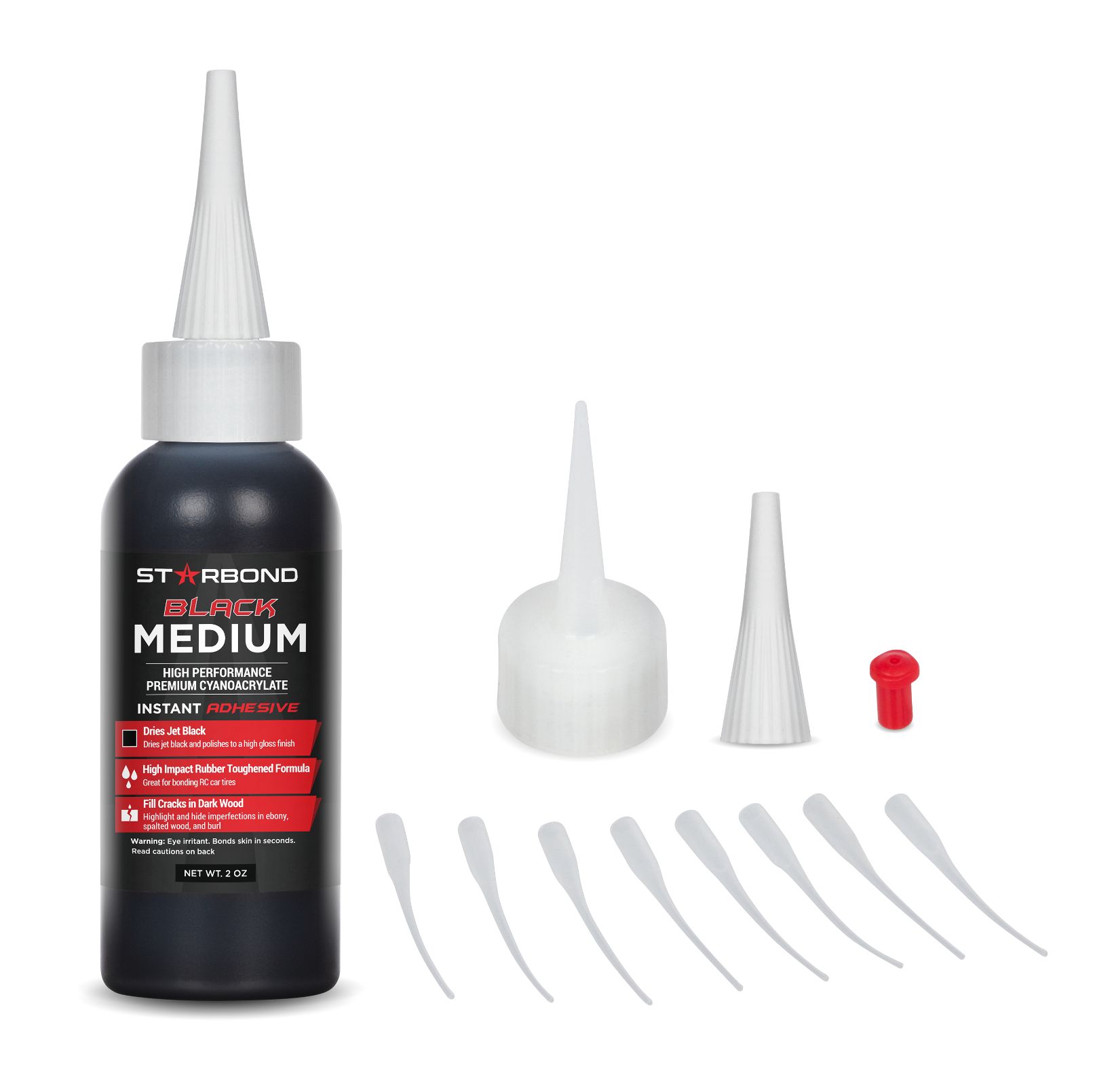
Starbond Black Medium CA glue 2oz.
£9.75 excl. vat Read more -
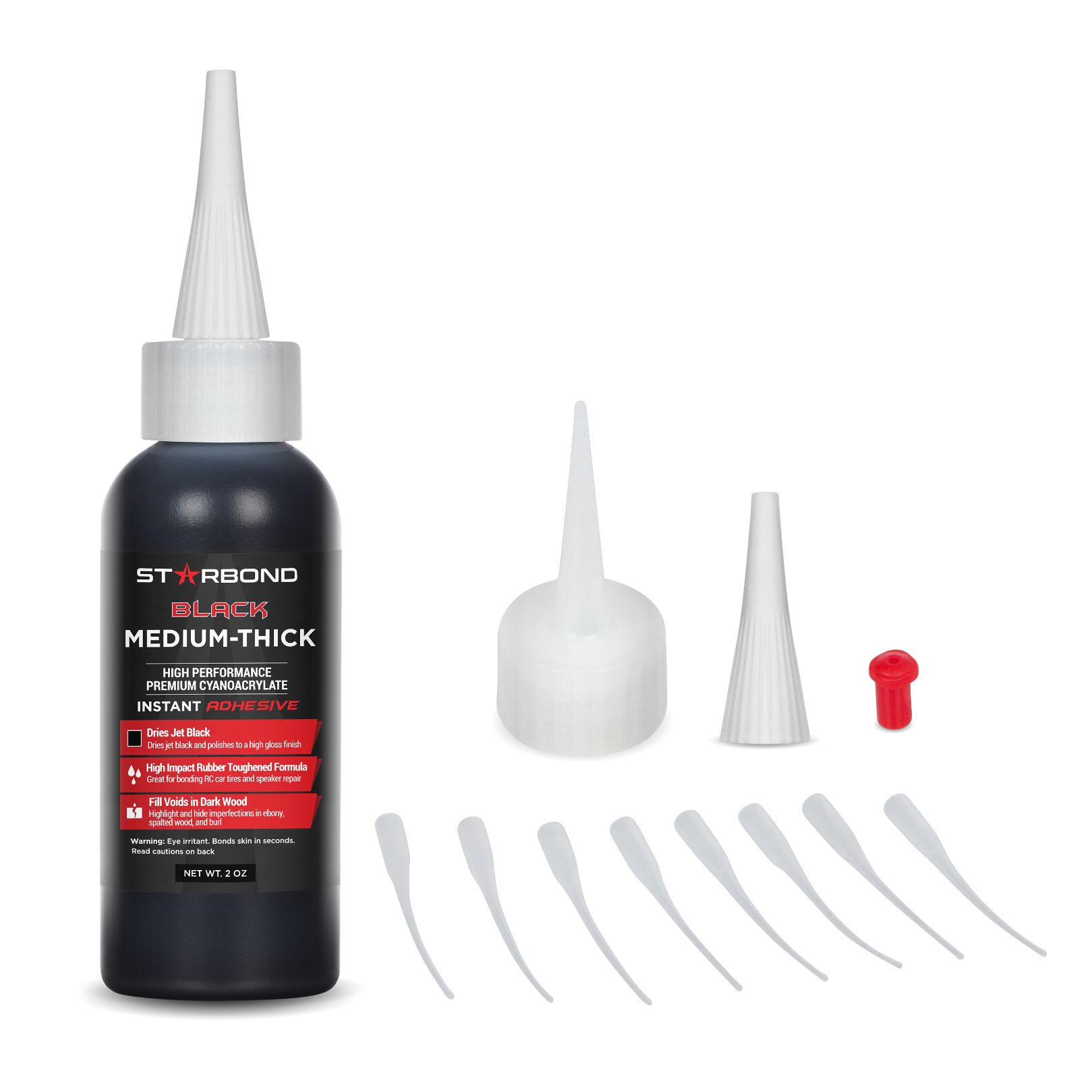
Starbond Black Medium Thick CA glue 2oz.
£9.75 excl. vat Read more -

Starbond Pump Sprayer Accelerator 2oz.
£6.25 excl. vat Read more -

Starbond Pump Sprayer Accelerator 8oz.
£11.20 excl. vat Read more -

Starbond Accelerator 16oz refill and pump sprayer
£17.20 excl. vat Read more -

Starbond Debonder CA Glue Remover
£5.00 excl. vat Add to basket -

Starbond Microtips Extension Applicators (50 pieces)
£5.00 excl. vat Read more
Starbond FAQs
What is Cyanoacrylate (CA)?
CA glue, also known as super glue, is a fast-acting adhesive that is used for a variety of applications. An adhesive possessing an extremely high push-pull strength, but a low shear strength, CA glues are often used to bond wood, rubber, metal, fiberglass, leathers, and most plastics. During polymerization, the adhesive reacts to the moisture present on the surface.
What is special about Starbond superglue?
Our customers get their hands on one of the freshest CA glues the market has to offer. We produce fresh CA glues on a monthly basis, which means our glues are never sitting in a warehouse or store shelf for extended periods of time. Therefore, you may use our superglues with the utmost confidence in performance, quality, and reliability. Plus, in any case that you have issues with our glues, give us a quick message or call, and we’ll either help you troubleshoot issues or simply replace your entire order.
What do the different CA viscosities mean?
Viscosity can simply be thought of as the thickness of a fluid. Viscosity is scientifically measured interchangeably in centipoises (cps) and millipascal-seconds (mPas), with 1 cps or mPas being the same as water. Starbond provides you with the exact viscosity measurement in its product descriptions to make sure you know what you are getting. The number refers to the viscosity of the CA. For example, our EM-02 has a viscosity of 2 cps/mPas.
What is the cps of your Clear Thin, Medium, and Thick CA glues?
Compared to other brands, Starbond carries 5 viscosities of standard clear CA glues. Starbond Super Fast Thin has a viscosity of 2 cps, Heavy Thin is 40 cps, Multi-Purpose Medium is 150 cps, Medium-Thick is 600 cps, and Gap Filler Thick is 2000 cps.
What is the difference between the Thin and Heavy-Thin CA glue?
The difference between the Super Fast Thin and Heavy Thin are viscosity and curing time. The Super Fast Thin is water-thin and cures in about 2-3 seconds. The Heavy Thin is comparable to olive oil in consistency and takes about 5-6 seconds to dry.
What is the main difference between the Medium and the Medium-Thick?
The main difference between the Medium and the Medium-Thick is the viscosity. The thickness of the Medium is similar to the motor oil while the thickness of Medium-Thick is similar to the syrup. The latter has a longer drying time compared to the Medium. But both are great for filling cracks, voids, knots and hiding imperfections.
How do I know which Starbond CA to use?
Thin CA glues are used for high gloss finishes, inlays, infiltrating pores through capillary action, and stabilizing fractures.
Medium CA glues (Clear, Brown, Black) are generally used for bonding close-fitting parts, filling small cracks/voids/knots, fixing wood blowouts, hobby model building, RC car tire bonding, pen making, and general-purpose repairs.
Thick CA glues are used for bonding, void and gap filling, and hobby model assembly (RC plane sparring). When bonding very porous material, choosing a Thick CA glue is important in order to keep the adhesive on the surface and from soaking into the object.
FAQ – GLUE PROPERTIES & SAFETY
Is CA harmful to any material?
CAs are safe to use with most materials and for each of our CAs, we list various compatible materials. However, standard CAs eat away at foam, so we recommend using our odorless CA (N/O-05) when working with foam. The only exception is when using standard CAs on EPP (expanded polypropylene) foam, as it will not eat away at it. In all instances when working with foam or not, it is advised to test a drop of the CA glue on the material before proceeding.
Are your products non-toxic when cured?
CA glues are relatively non-toxic but they are not considered as “food safe” by the FDA.
What do I do if I get my fingers glued together?
If Starbond Debonder is available, use the built-in brush cap to apply a generous amount of the gel onto your fingers. Gently rub them together for a few minutes until the fingers are free. Wash your hands thoroughly with soap and water. Other household solvents that can be used to de-bond your fingers in case of emergencies are acetone or petroleum jelly. Simply apply a sufficient amount to your fingers, and gently rub your fingers together in a circular motion until they are free.
How heat tolerant are CA glues?
Dried CA glue is fairly resistant to heat but its strength may be reduced at higher temperatures. Typically, outdoor temperatures (up to 100-110 degrees F) will pose no problems, but it will not hold up if heated too hot (above 330 degrees F).
In what cases are they combustible?
CA glues polymerizes rapidly and starts to release exothermic heat when it comes into contact with alcohol, amines, and alkalis, cotton, wool, and very dry material.
FAQ – GLUE CURING & DRYING TIME
When does the glue reach its maximum strength?
Starbond CA glues typically achieve significant bonding strength within 10-15 minutes. However, it is recommended to allow up to 10-15 hours for glues to reach maximum bonding strength.
When is the accelerator needed?
A few instances an accelerator is absolutely needed are when: a) a large volume of glue is applied (i.e. large knots and voids) b) the ambient temperature is cold (below 65°F) or c) the bonding surface is very dense and nonporous.
How long will it take for my Starbond CA glue to set with the accelerator? And what is the set time without the accelerator?
With the accelerator, thin CA glues typically set in 1-2 seconds, medium CA glues in 5 seconds, and thick CAs in 10 seconds.
Without the accelerator, the thin CA take about 5 seconds, the medium CA takes about 20 seconds, and the thick CA about 40-50 seconds. This curing times above are to be used as an reference for when one drop of CA is applied per square inch of surface to be bonded. When larger volumes are used, the glue drying time may significantly lengthen.
What is the difference between the pump and aerosol accelerator?
The aerosol accelerator sprays a finer mist and is better if you don’t plan to use the accelerator as frequently because of its extended shelf life. The pump sprayer accelerator sprays a concentrated mist and is the more economical option if you use the accelerator frequently. The aerosol accelerator is pressurized like a can of hairspray while the pump is more like a misted squirt bottle.
It says in your Accelerator that it contains acetone, and I was wondering what the approximate percentage was? Should I be worried about it damaging paint finishes?
The approximate percentage of the acetone in the Accelerator is high (> 50 percent) and it may damage paint finishes. It’s recommended to spot-test the accelerator before fully applying it on the finish.
How well do those little tips (microtips) stay clean?
They’re good to use 2-4 times. Tip on reusing microtips: Drop them into a jar filled with some acetone and shake them around. It will unclog the tips.
How do I prevent the dispenser tops from clogging on my CA products?
After use, wipe off any residue that remains around the applicator opening. Tap the bottom of the glue bottle on a hard surface. This will draw the glue that is inside the applicator back down to the bottle. Apply the white cap cover over the applicator. It should snap on.
I won’t be using the glue for another week or so. Which cap provides a tighter seal, the red pin cap or white cap?
The white ribbed cap will provide a tighter seal. We also recommend storing the glues in the fridge or freezer to double its shelf life.
What kind of shelf-life does it have? How can I keep my CA glue fresh?
When stored and handled correctly, our clear CA glues can last several years in a cold environment. Just make sure to store the bottle under 40°F before and after use to qualify for our 30 month shelf life warranty. If the product does not last, we will replace that bottle free of charge.
Will the fridge change the consistency of the glue? Will I need to let the glue acclimate to room temperature before I use it or can I just use it straight from the fridge?
The fridge will not change the consistency of the glue. When used at cold temperatures, the curing time of the glue may be lengthened. Therefore, we recommend waiting 1-2 minutes for the glue to warm up to room temperature before using for best results.
